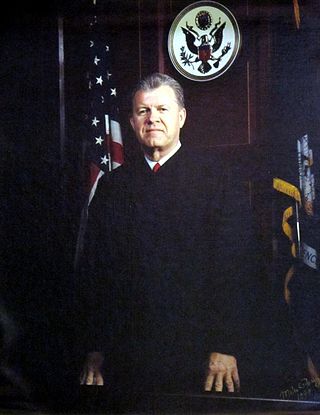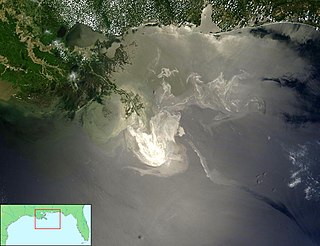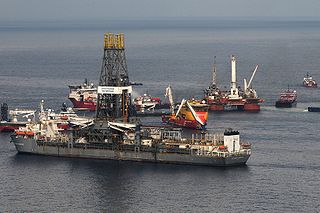
Jefferson Parish is a parish in the U.S. state of Louisiana. As of the 2020 census, the population was 440,781. Its parish seat is Gretna, its largest community is Metairie, and its largest incorporated city is Kenner. Jefferson Parish is included in the Greater New Orleans area.

Harvey is a census-designated place (CDP) in Jefferson Parish, Louisiana, United States. Harvey is on the south side of the Mississippi River, within the New Orleans–Metairie–Kenner metropolitan statistical area. The majority-minority population was 20,348 at the 2010 census, down from 22,226 at the 2000 census. The 2020 census determined 22,236 people lived in the CDP.

Kenner is a city in the U.S. state of Louisiana. It is the most populous city in Jefferson Parish, and is the largest incorporated suburban city of New Orleans. The population was 66,448 at the 2020 census, making it the sixth-most populous city in Louisiana.

U.S. Highway 90 Business is a business route of U.S. Highway 90 located in and near New Orleans, Louisiana. It runs 14.25 miles (22.93 km) in a general east–west direction from US 90 in Avondale to a junction with Interstate 10 (I-10) and US 90 in the New Orleans Central Business District.
Jed Horne is a Pulitzer Prize-winning journalist who was for many years city editor of The Times-Picayune, the New Orleans daily newspaper.

William Harold Nungesser is an American politician serving as the 54th lieutenant governor of Louisiana since 2016. A member of the Republican Party, Nungesser is also the former president of the Plaquemines Parish Commission, having been re-elected to a second four-year term in the 2010 general election in which he topped two opponents with more than 71 percent of the vote. His second term as parish president began on January 1, 2011, and ended four years later.

Carl Joseph Barbier is a senior United States district judge of the United States District Court for the Eastern District of Louisiana.

The Deepwater Horizon oil spill was an environmental disaster which began on 20 April 2010, off the coast of the United States in the Gulf of Mexico on the BP-operated Macondo Prospect, considered the largest marine oil spill in the history of the petroleum industry and estimated to be 8 to 31 percent larger in volume than the previous largest, the Ixtoc I oil spill, also in the Gulf of Mexico. Caused in the aftermath of a blowout and explosion on the Deepwater Horizon oil platform, the United States federal government estimated the total discharge at 4.9 MMbbl. After several failed efforts to contain the flow, the well was declared sealed on 19 September 2010. Reports in early 2012 indicated that the well site was still leaking. The Deepwater Horizon oil spill is regarded as one of the largest environmental disasters in world history.

On April 20, 2010, an explosion and fire occurred on the Deepwater Horizon semi-submersible mobile offshore drilling unit, which was owned and operated by Transocean and drilling for BP in the Macondo Prospect oil field about 40 miles (64 km) southeast off the Louisiana coast. The explosion and subsequent fire resulted in the sinking of the Deepwater Horizon and the deaths of 11 workers; 17 others were injured. The same blowout that caused the explosion also caused an oil well fire and a massive offshore oil spill in the Gulf of Mexico, considered the largest accidental marine oil spill in the world, and the largest environmental disaster in United States history.
The National Commission on the BP Deepwater Horizon Oil Spill and Offshore Drilling is a bipartisan presidential commission, established by Executive Order 13543 signed by Barack Obama on May 21, 2010, that is "tasked with providing recommendations on how the United States can prevent and mitigate the impact of any future spills that result from offshore drilling." It came about as a result of the April 2010 Deepwater Horizon oil spill. The first public hearings, held on July 12 and 13, 2010 in New Orleans, included scheduled testimony from Federal government officials and representatives of BP on the status of the spill and clean-up efforts, as well as from local officials, community leaders, and scientists on the economic, cultural and ecological impacts of the oil spill on Gulf Coast communities and ecosystems.

The civil and criminal proceedings stemming from the explosion of Deepwater Horizon and the resulting massive oil spill in the Gulf of Mexico began shortly after the April 20, 2010 incident and have continued since then. They have included an extensive claims settlement process for a guilty plea to criminal charges by BP, and an ongoing Clean Water Act lawsuit brought by the U.S. Department of Justice and other parties.

This article covers the effect of the Deepwater Horizon disaster and the resulting oil spill on global and national economies and the energy industry.
Following is a Timeline of the Deepwater Horizon oil spill for May 2010.

The Deepwater Horizon investigation included several investigations and commissions, among others reports by National Incident Commander Thad Allen, United States Coast Guard, National Commission on the BP Deepwater Horizon Oil Spill and Offshore Drilling, Bureau of Ocean Energy Management, Regulation and Enforcement, National Academy of Engineering, National Research Council, Government Accountability Office, National Oil Spill Commission, and Chemical Safety and Hazard Investigation Board.

The 2010 Deepwater Horizon oil spill in the Gulf of Mexico has been described as the worst environmental disaster in the United States, releasing about 4.9 million barrels of crude oil making it the largest marine oil spill. Both the spill and the cleanup efforts had effects on the environment.

The Health consequences of the Deepwater Horizon oil spill are health effects related to the explosion of the Deepwater Horizon offshore drilling rig in the Gulf of Mexico on April 20, 2010. An oil discharge continued for 84 days, resulting in the largest oil spill in the history of the petroleum industry, estimated at approximately 206 million gallons. The spill exposed thousands of area residents and cleanup workers to risks associated with oil fumes, particulate matter from Controlled burns, volatile organic compounds (VOCs), polycylic aromatic hydrocarbons (PAHs), and heavy metals.

The Deepwater Horizon oil spill was discovered on the afternoon of 22 April 2010 when a large oil slick began to spread at the former rig site. According to the Flow Rate Technical Group, the leak amounted to about 4.9 million barrels of oil, exceeding the 1989 Exxon Valdez oil spill as the largest ever to originate in U.S.-controlled waters and the 1979 Ixtoc I oil spill as the largest spill in the Gulf of Mexico. BP has challenged this calculation saying that it is overestimated as it includes over 810,000 barrels of oil which was collected before it could enter the Gulf waters.

The GuLF Study, or Gulf Long-term Follow-up Study, is a five-year research project examining the human-health consequences of the Deepwater Horizon oil spill in April 2010. The spill followed an explosion on a drilling rig leased by BP, the British oil company, and led to the release of over four million barrels of oil into the Gulf of Mexico, 48 miles off the coast of Louisiana in the United States.

The Chandeleur Sound is a sound that lies between mainland Louisiana and the Chandeleur Islands in Saint Bernard Parish. It is situated east of Breton Sound and south of Mississippi Sound. It was formed by the mixing of the Gulf of Mexico and the waters of the Mississippi River, protected by the Islands.
In Louisiana, there are nearly 33,000 Vietnamese Americans and other people of Vietnamese descent.











